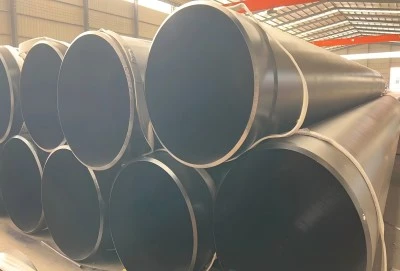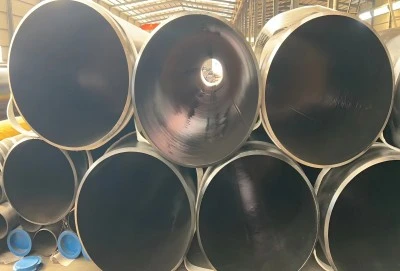When it comes to the oil and gas industry, precision and safety are paramount. One crucial aspect of ensuring both is accurately calculating the wall thickness of API 5L line pipes. These pipes, designed to meet the American Petroleum Institute's stringent standards, play a vital role in transporting oil and gas across vast distances. In this comprehensive guide, we'll dive deep into the world of API 5L line pipes, exploring the methods for calculating wall thickness, understanding the basic formula, and examining practical applications.
|
|
|
Basic Formula for Wall Thickness Calculation
Before we delve into the specifics of API 5L line pipe wall thickness, it's essential to understand the fundamental formula used in these calculations. The basic formula for determining the minimum required wall thickness of a pipe is:
t = (P * D) / (2 * S * F * E)
Where:
- t = minimum required wall thickness
- P = internal design pressure
- D = outside diameter of the pipe
- S = specified minimum yield strength of the pipe material
- F = design factor (typically 0.72 for pipelines)
- E = longitudinal joint factor (1.0 for seamless and electric resistance welded pipes)
This formula, derived from the hoop stress equation, forms the basis for more specific calculations used in determining the wall thickness of API 5L line pipes. It takes into account the various forces acting on the pipe, including internal pressure and material properties, to ensure the pipe can withstand the intended operating conditions safely [1].
Nominal Wall Thickness of API 5L Line Pipe
When discussing API 5L line pipes, it's crucial to understand the concept of nominal wall thickness. The nominal wall thickness is the theoretical thickness of the pipe wall, specified in the manufacturing process. However, due to manufacturing tolerances and other factors, the actual wall thickness may vary slightly from this nominal value.
For API 5L line pipes, the nominal wall thickness is typically calculated using a modified version of the basic formula we discussed earlier. The API 5L specification provides guidelines for determining the nominal wall thickness based on factors such as:
- Pipe grade (e.g., X42, X52, X60, etc.)
- Outside diameter
- Design pressure
- Safety factors
The API 5L specification also outlines allowable tolerances for wall thickness. For instance, for pipes with a nominal wall thickness of 5mm or less, the tolerance is ±0.5mm. For pipes with a nominal wall thickness greater than 5mm, the tolerance is typically ±10% of the nominal thickness [2].
It's worth noting that while the nominal wall thickness provides a good starting point, engineers often need to consider additional factors when determining the actual required wall thickness for a specific application. These factors may include:
- Corrosion allowance
- External loads (e.g., soil pressure for buried pipelines)
- Temperature effects
- Installation method (e.g., horizontal directional drilling)
By taking these factors into account, engineers can ensure that the selected API 5L line pipe not only meets the basic requirements but also provides a suitable safety margin for the specific operating conditions.
Practical Application of Wall Thickness Calculation
Now that we've covered the theoretical aspects, let's explore how these calculations are applied in real-world scenarios. When designing a pipeline using API 5L line pipes, engineers typically follow a step-by-step process to determine the appropriate wall thickness:
- Determine design parameters: This includes factors such as the maximum operating pressure, temperature range, and environmental conditions.
- Select pipe material and grade: Based on the operating conditions, engineers choose an appropriate API 5L grade (e.g., X60, X70) that provides the necessary strength and toughness.
- Calculate minimum required wall thickness: Using the formula discussed earlier, engineers determine the minimum wall thickness needed to withstand the design pressure.
- Apply safety factors: Additional thickness is added to account for corrosion, manufacturing tolerances, and other potential risks.
- Consider practical limitations: The calculated thickness is rounded up to the nearest available standard size, taking into account manufacturing capabilities and cost considerations.
- Verify compliance: The final selected wall thickness is checked against API 5L specifications and any additional project requirements.
Let's consider a practical example. Suppose we're designing a pipeline to transport natural gas at a maximum operating pressure of 1000 psi (6.89 MPa). We've selected API 5L X60 grade pipe with an outside diameter of 24 inches (609.6 mm). Using the basic formula and applying appropriate safety factors, we might calculate a minimum required wall thickness of 0.375 inches (9.53 mm).
However, after considering corrosion allowance and rounding up to the nearest standard size, we might specify a nominal wall thickness of 0.500 inches (12.7 mm). This provides an extra margin of safety and accounts for potential thickness variations within the manufacturing tolerances [3].
It's important to note that while these calculations provide a solid foundation, the final selection of API 5L line pipe specifications should always be reviewed and approved by qualified engineers. They will consider additional factors such as:
- Local regulations and industry standards
- Specific project requirements
- Long-term maintenance and inspection plans
- Cost-effectiveness and availability of materials
By carefully considering all these factors, engineers can ensure that the selected API 5L line pipe not only meets the immediate design requirements but also provides long-term reliability and safety for the entire pipeline system.
API 5L Line Pipe For Sale
Understanding the intricacies of wall thickness calculation for API 5L line pipes is crucial for ensuring the safety, efficiency, and longevity of oil and gas pipelines. By applying the basic formula, considering nominal wall thickness specifications, and adapting calculations to practical applications, engineers can design pipeline systems that meet the demanding requirements of the industry.
LONGMA GROUP adheres strictly to international quality standards and certifications, including API, ISO, and ASTM. Our state-of-the-art manufacturing facilities are equipped with advanced testing equipment and processes to ensure the highest quality and reliability of our products. If you are choosing your API 5L line pipe manufacturers, welcome to contact LONGMA GROUP at info@longma-group.com. Our team of experts is ready to assist you in selecting the perfect API 5L line pipe for your specific project needs, ensuring optimal performance and safety for your pipeline system.














